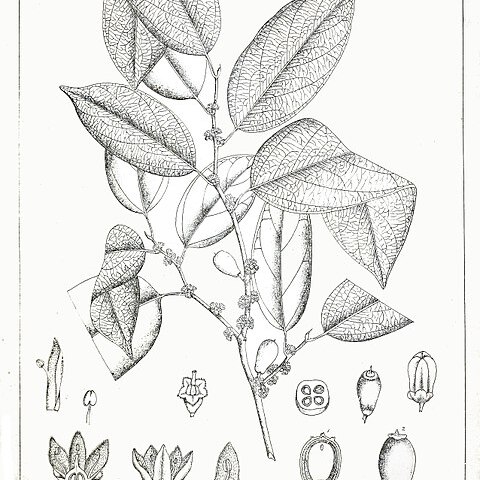Trees. Leaves petiolate, alternate, entire, subcoriaceous to coriaceous, glabrous; veins very prominent beneath, ± impressed above, tertiary veins characteristically parallel to one another (as also in Strombosiopsis). Inflorescence axillary, with the flowers fasciculate on a very short lateral shoot, padlike. Flowers bisexual, pedicellate. Calyx small, tubular, 5-lobed, accrescent, adnate to the ovary. Petals 5, valvate, with a fine indumentum on the inner surface usually confined to the upper half. Stamens 5, epipetalous; filaments free for only a short distance; anthers dorsifixed. Ovary semi-inferior to inferior, 3–5-locular, borne on a disk or partially immersed in it, scarcely lobed; ovules 1 per locule, pendulous from a central placenta; style short; stigma 3–5-lobed. Fruit a drupe, bearing the remains of the calyx at the apex.
Ovary semi-inferior, 3–5-locular at the base, covered by the disk; ovules 3–5 (6), pendulous in the middle of the loculi from the top of a central placenta; style short; stigma obtuse.
Stamens 5, opposite the petals; filaments adnate to the petals; anthers dorsifixed.
Fruit drupaceous, crowned by the vestiges of the calyx-limb; endocarp crustaceous.
Seed pendulous, with a minute apical embryo, surrounded by fleshy endosperm.
Calyx-tube adnate to the ovary; limb small, with 5 broadly ovate lobes.
Flowers bisexual, fasciculate on very short lateral shoots.
Petals 5, perigynous, valvate, connivent or patent-erect.
Leaves glabrous.
Trees.

